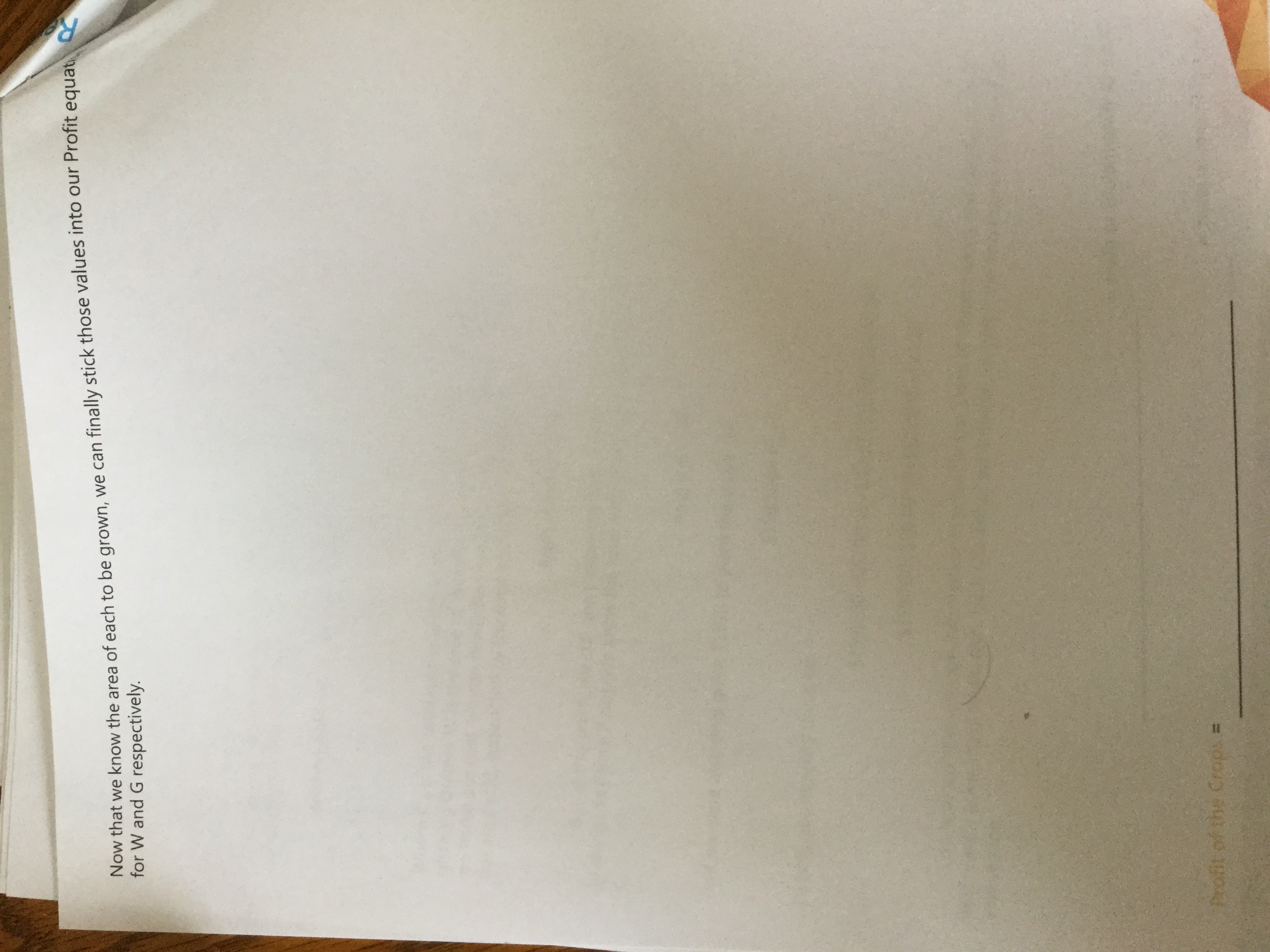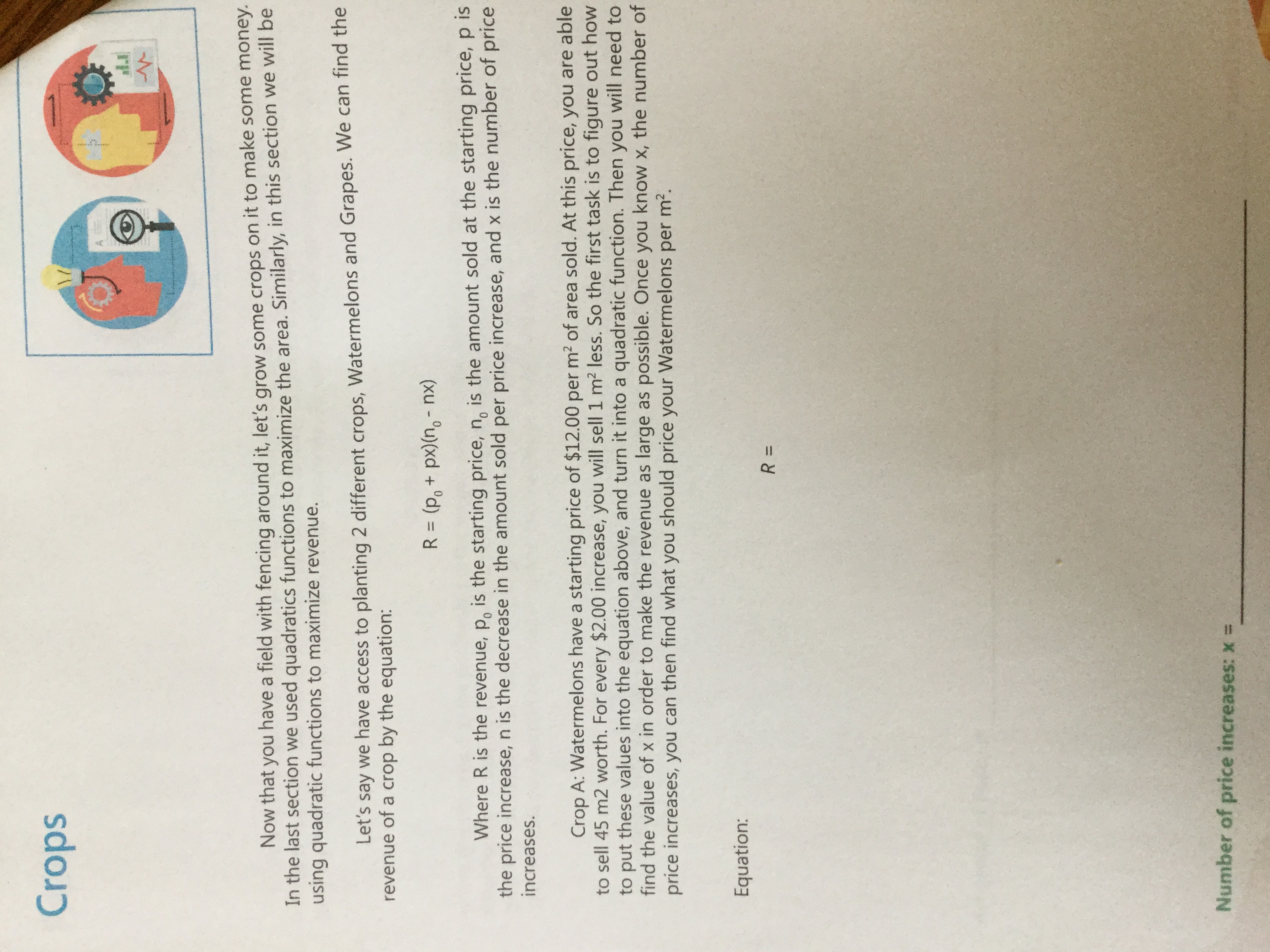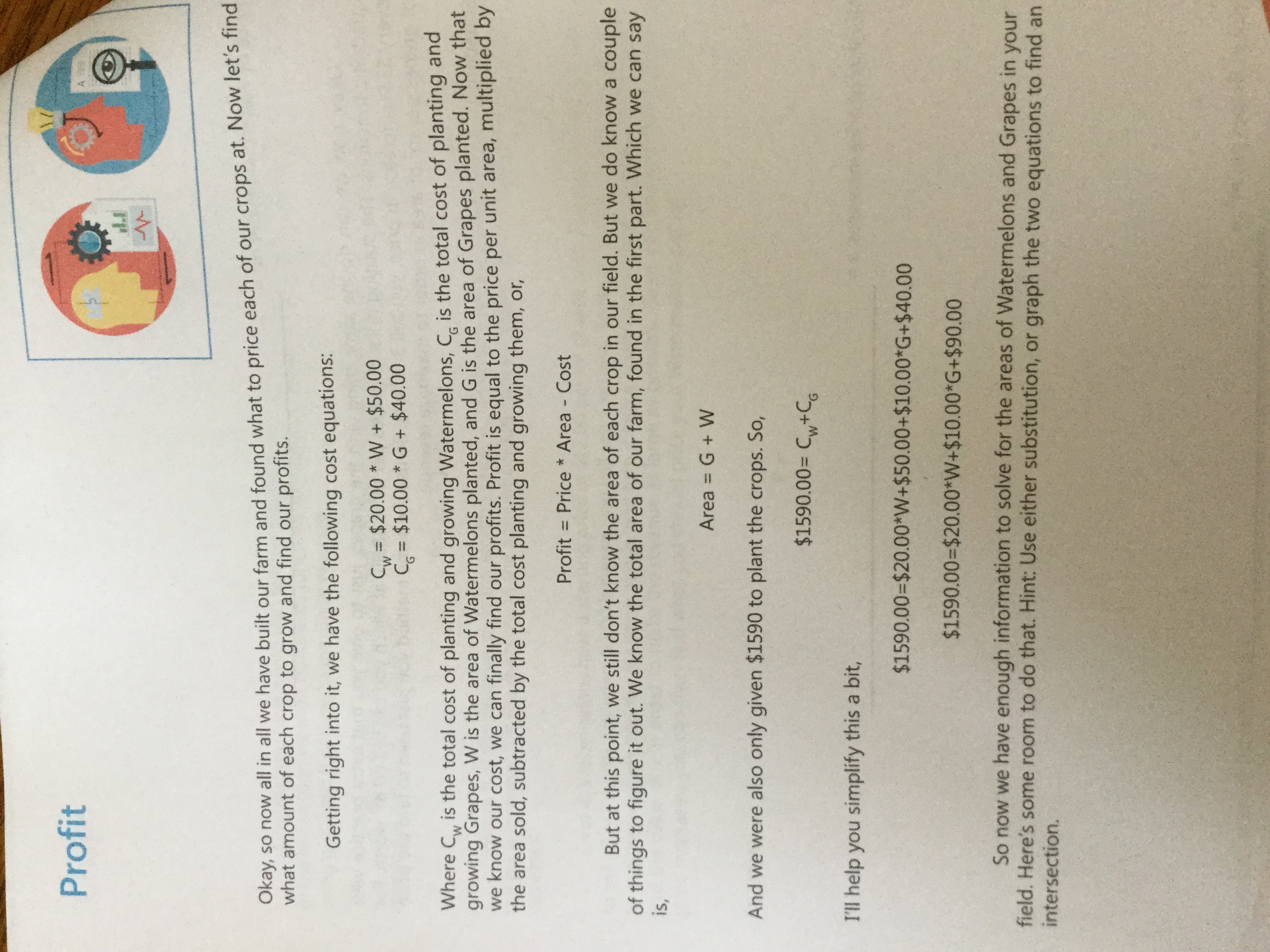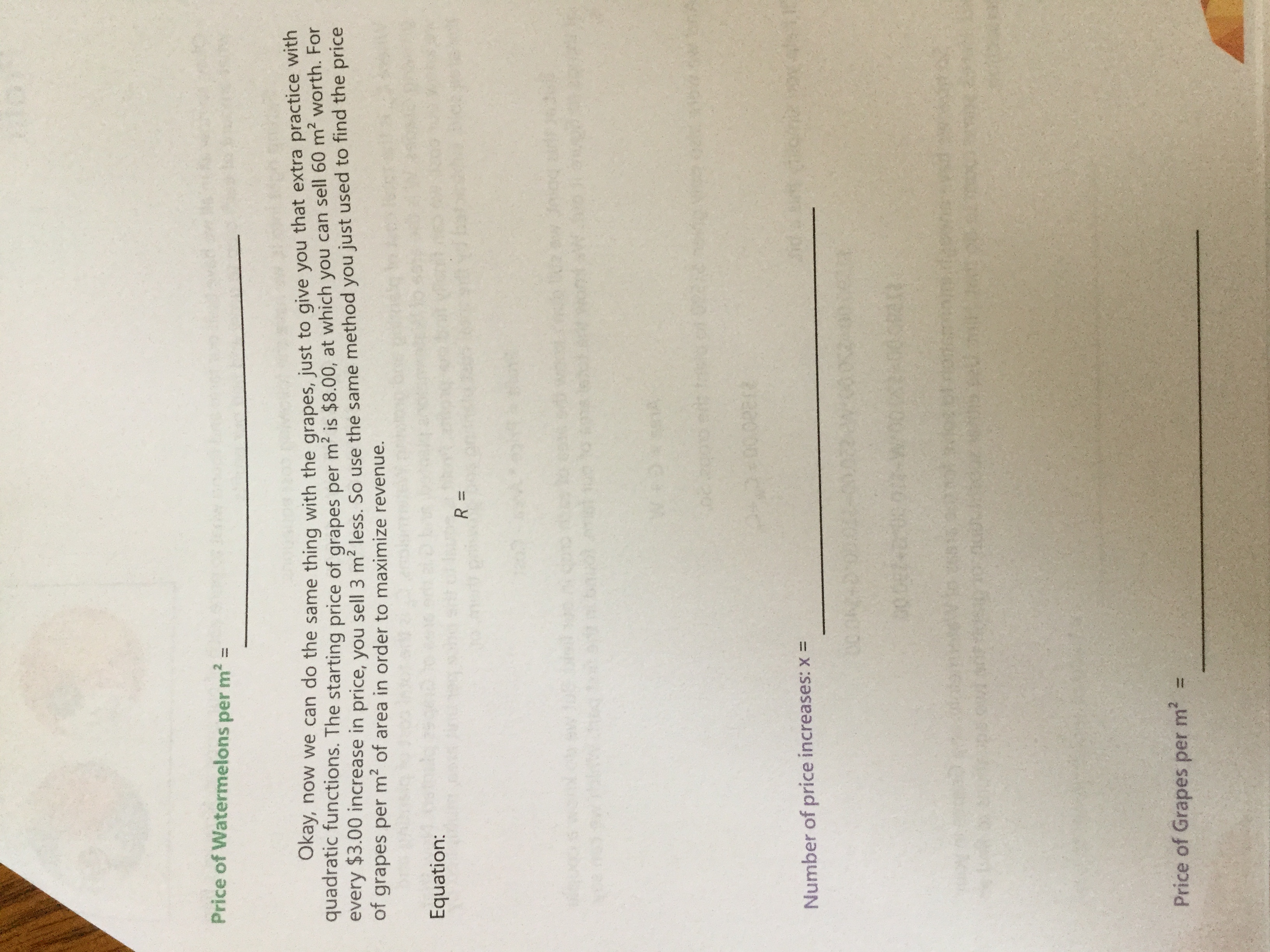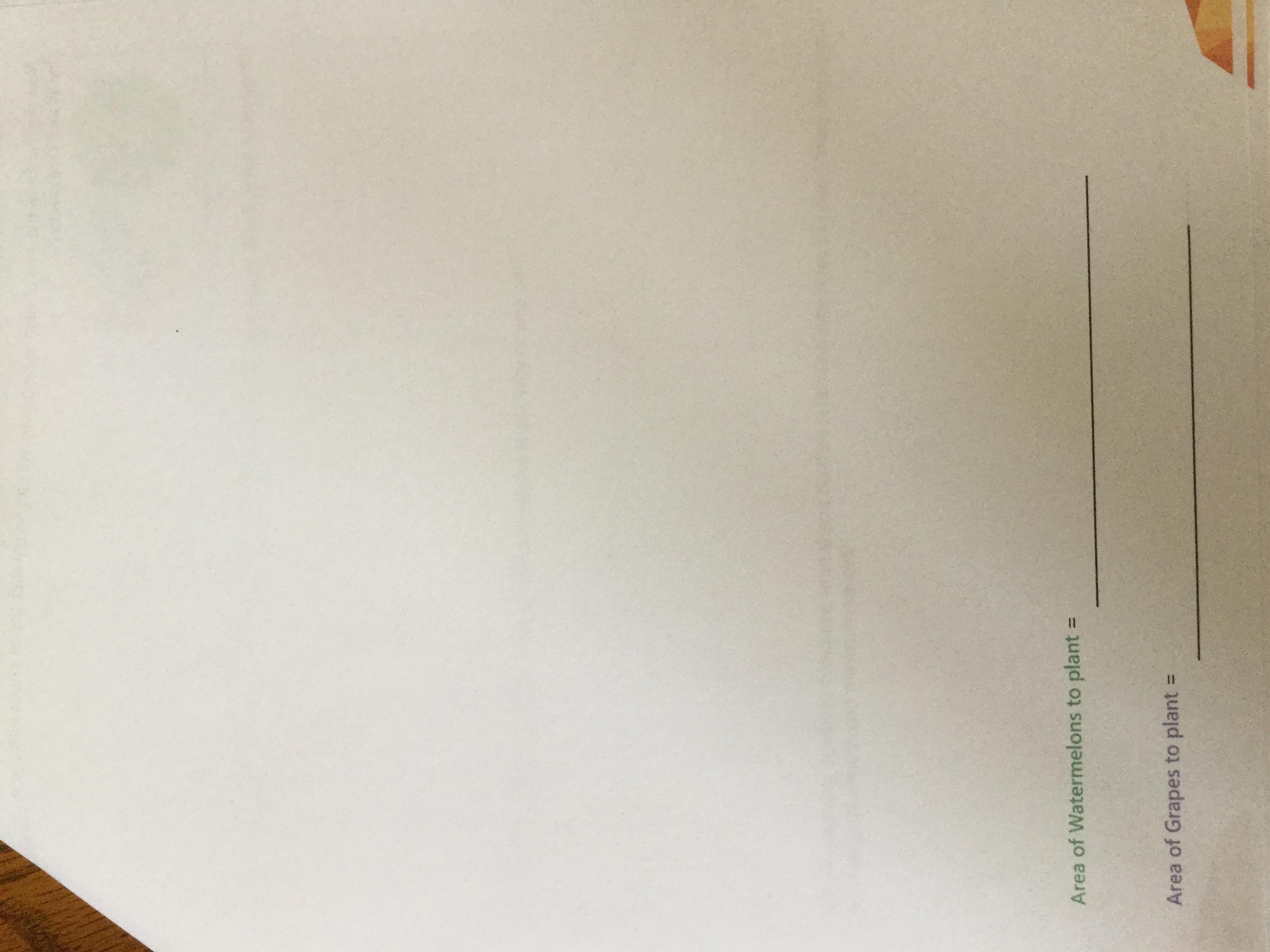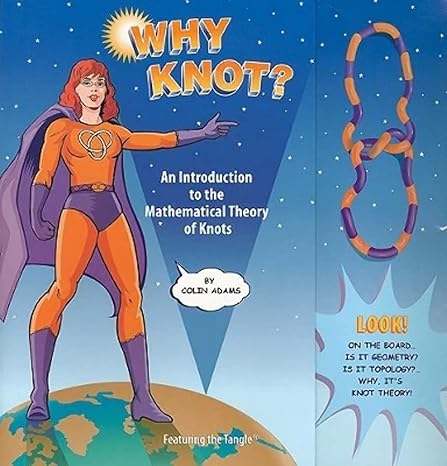Hey! Can someone please help me with this project involving Quadratic functions? I'd really appreciate it!
Now that we know the area of each to be grown, we can finally stick those values into our Profit equat, for W and G respectively. Profit of the Crops =Crops M Now that you have a field with fencing around it, let's grow some crops on it to make some money In the last section we used quadratics functions to maximize the area. Similarly, in this section we will be using quadratic functions to maximize revenue. Let's say we have access to planting 2 different crops, Watermelons and Grapes. We can find the revenue of a crop by the equation: R = (P.+ px) (n - nx) Where R is the revenue, p, is the starting price, n, is the amount sold at the starting price, p is the price increase, n is the decrease in the amount sold per price increase, and x is the number of price increases. Crop A: Watermelons have a starting price of $12.00 per m of area sold. At this price, you are able to sell 45 m2 worth. For every $2.00 increase, you will sell 1 m less. So the first task is to figure out how to put these values into the equation above, and turn it into a quadratic function. Then you will need to find the value of x in order to make the revenue as large as possible. Once you know x, the number of price increases, you can then find what you should price your Watermelons per m. Equation: R = Number of price increases: x =Profit Okay, so now all in all we have built our farm and found what to price each of our crops at. Now let's find what amount of each crop to grow and find our profits. Getting right into it, we have the following cost equations: Cw = $20.00 * W + $50.00 CG = $10.00 * G + $40.00 Where Cw is the total cost of planting and growing Watermelons, C, is the total cost of planting and growing Grapes, W is the area of Watermelons planted, and G is the area of Grapes planted. Now that we know our cost, we can finally find our profits. Profit is equal to the price per unit area, multiplied by the area sold, subtracted by the total cost planting and growing them, or, Profit = Price * Area - Cost But at this point, we still don't know the area of each crop in our field. But we do know a couple of things to figure it out. We know the total area of our farm, found in the first part. Which we can say is , Area = G + W And we were also only given $1590 to plant the crops. So, $1590.00= CW+CG I'll help you simplify this a bit, $1590.00=$20.00*W+$50.00+$10.00*G+$40.00 $1590.00=$20.00*W+$10.00*G+$90.00 So now we have enough information to solve for the areas of Watermelons and Grapes in your intersection. field. Here's some room to do that. Hint: Use either substitution, or graph the two equations to find anPrice of Watermelons per m? = Okay, now we can do the same thing with the grapes, just to give you that extra practice with quadratic functions. The starting price of grapes per m is $8.00, at which you can sell 60 m worth. For every $3.00 increase in price, you sell 3 m less. So use the same method you just used to find the price of grapes per m of area in order to maximize revenue. Equation: R = Number of price increases: x = Price of Grapes per m? =\f
